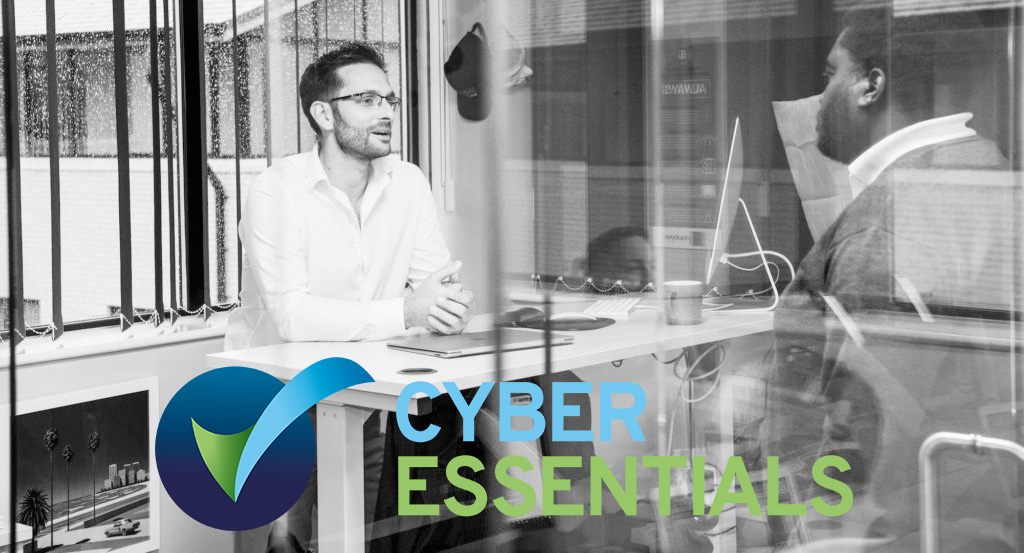
Cybersecurity is one of the most rapidly changing aspects of modern IT. With new threats emerging every day, keeping up with the latest security measures and ensuring your approach to online security is consistent and sufficient is essential.
With this in mind, a new Cyber Essentials scheme allows companies to keep track of their efforts, ensure they are protected, and give you peace of mind that your security measures are keeping you safe.
As a Cyber Essentials Plus certified company, Microbyte is ideally placed to help you achieve the certification and keep your systems safe.
Here’s what you need to know.
What is Cyber Essentials certification?
Cyber Essentials is an effective, Government backed scheme that will help businesses of all sizes protect against common cyber threats. The scheme includes a range of questions to help prompt a greater understanding of your current security measures and highlights where a company may need to improve its cyber security.
The scheme has two levels:
Cyber Essentials: This self-assessment certification protects businesses against the most common cyber-attacks, minimising vulnerability and giving you confidence that you are safe from cybercriminals. The controls and checklist covered in this certification can discourage cyber-attacks and comes with official NCSC approval for 12 months.
Cyber Essentials Plus: This additional certification includes the same Cyber Essentials checklist as the Essential assessment to protect against common cyber security threats. In addition, the Cyber Essentials Plus certification consists of a manual, technical inspection, and verification.
Both schemes are officially verified by the IASME Consortium (IASME) for third-party, licensed authentication. However, you should work with a professional IT support company to help you develop the correct processes to ensure that you pass and stay safe.
Cyber Essentials checklist and scope
The Cyber Essentials checklist covers 5 key controls, applicable to all businesses.
- Firewalls
- Secure configuration
- Security update management
- User access control
- Malware protection
Benefits of being Cyber Essentials certified
Achieving a Cyber Essentials certification can have a range of benefits for your business, employees, and your customers. Security is everyone’s responsibility, and having the appropriate cyber protection is the first step toward a successful future.
Just a few of the benefits of receiving an official Cyber Essentials certification include:
- Protect against approximately 80% of cyber attacks
- Tender for government contracts
- Free cyber insurance
- Increase customer and supply chain confidence.
- Listed on the NCSC database to verify your certification
As more businesses understand the benefits and importance of highlighting their commitment to cyber security, the need for Cyber Essentials certification is growing. Many companies, especially those working with the government, require Cyber Essential certification, meaning that you may be losing out on business without it.
Furthermore, since cyberattacks are continually developing and changing, the more businesses with adequate security, the harder criminals have to work to develop more sophisticated attacks. This means that by protecting your business, you’re helping protect others.
How to get a Cyber Essentials certification
The good news is that for such an important certification, getting a Cyber Essentials certification is easier than you think.
The first step is to sign up for our Cyber Essentials checklist. This list is a self-assessment questionnaire that will get you thinking about your current IT protection. Questions include things like; Do you have a policy to encourage people to use unique and strong passwords?
The Cyber Essentials questionnaire is designed to focus on different elements of your everyday security and security controls used by your staff in their current roles.
We can help you answer these questions if you are unsure and can talk to you about your answers. We will make bespoke recommendations and help create and implement policies that support your business and ensure you can answer each question until certification is achieved.
Our experts are also on hand to provide analysis and feedback on the technical audit aspect of the Cyber Essentials plus certification.
Once you are happy with your cyber security, an external scan looking for vulnerabilities will determine if you meet the qualifications for certification. The scans are remote and are performed off-site by the official auditing company.
Once approved, you will receive your certification and can feel confident that your standard security measures are keeping your business safe.
Get Your Cyber Essentials Certification Today
As a Cyber Essentials Plus certified IT support company, we can help you achieve Cyber Essentials verification. Our team of experts keeps up to date with the latest security threats and can talk you through any gaps in your protection.
As well as helping you achieve your certification, we can discuss further measures to ensure your protection is effective. We can offer tailored advice and guidance to help you feel confident that your business and digital assets are safe now and in the future.
To start your certification process, complete the form above and we will be in touch.





